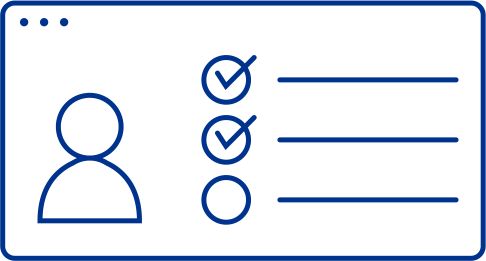The Luxembourg M&A market remains dynamic, attracting both international strategic investors and global financial sponsors seeking attractive opportunities within the country's diverse economic landscape. However, navigating the complexities of a cross-border M&A transaction requires careful planning and execution. For CEOs, board members, and entrepreneurs looking to maximize value, understanding the key levers for success in cross-border M&A is crucial.
This article outlines essential tips and tricks to ensure a smooth and successful international M&A process, ultimately helping you achieve your desired outcome(s).
1. Pre-transaction optimization: laying the foundations for success
Thorough preparation is essential if you are to maximize the intrinsic value of your business. This includes operational, financial, legal, and tax-related aspects. (For a detailed guide on pre-sale preparation, please refer to our previous article).
2. Strategic buyer identification: thinking beyond the obvious
Business owners often have preconceived notions about the ideal acquirer – but the most suitable buyer may not be immediately apparent. Casting a wider net and considering companies in adjacent industries and across geographies can uncover strategic synergies and unlock greater value.
Challenge assumptions: Often, business owners believe they have identified the best acquirer for their business. However, in many cases the final acquirer is not the one that was initially expected. If you believe a certain acquirer to be the most logical buyer, the chances are they will also see themselves as the “best” buyer and will be overconfident and complacent in their bidding, not offering market value. Identifying – and having access to – potential acquirers in other geographies is often key to a successful outcome.
Uncover hidden synergies: Companies in related sectors or those seeking expansion into new markets may place a higher strategic value on your business, leading to more favorable terms.
Cultural due diligence: Cultural compatibility is often overlooked but is crucial for successful integration of both local and cross-border M&A transactions. A company's culture is its lifeblood, and mismatched values can lead to friction and integration challenges. Explore factors like risk appetite, client base, approach to ESG principles, and management style to uncover potential areas of synergy or discord.
3. Process timeline management: maintaining momentum and minimizing uncertainty
Time is of the essence in M&A. A protracted process can lead to uncertainty, reduced buyer interest, and ultimately, a less favorable outcome. Here's how to keep things moving:
- Early engagement: Initiate informal discussions with potential acquirers early on to gauge interest, prepare them for the formal process, and potentially avoid conflicts with their existing transaction timelines.
- Stakeholder mapping: Identify all key decision-makers and influencers within potential acquirers. In the case of global acquirers in cross border deals, this should be both at the local and global level. Understanding their motivations and building relationships with them is crucial for deal success.
- Clear timeline and communication: Establish a timeline with defined milestones and communicate it transparently to all bidders. Keep up consistent communication and give timely responses to inquiries to keep the process moving.
- Competitive tension: A balanced approach to competition is key. Too few bidders limit leverage, while excessive pressure can deter serious parties. A well-structured process with a manageable number of qualified bidders promotes healthy competition, encouraging better offers.
4. Operational continuity and transparency: instilling buyer confidence
- Optimized information flow: Manage the staged release of strategic information to maintain buyer interest while protecting confidentiality. Give sufficient detail to enable informed decisions without overwhelming parties with unnecessary data early in the process.
- Business focus: While engaging in the M&A process, maintaining focus on day-to-day operations is crucial. A smooth-running operation is more attractive to buyers and minimizes post-merger integration challenges.
- Robust business plan: Provide a well-articulated business plan that outlines a clear and achievable path for future growth. Highlight competitive advantages, market opportunities, and potential synergies.
- Transparent financials: Give a comprehensive and "normalized" view of historical financial performance, including audited financial statements in a globally recognized format. Consider a Vendor Due Diligence (VDD) report to proactively address potential concerns and streamline the due diligence process.
For more information on how to ace the due diligence process, please see our next blog article.
5. Choose the right partners
Experienced legal counsel: Engage M&A lawyers with a proven track record in your specific industry, and an understanding of the specific aspects pertaining to cross border transactions. They should provide invaluable guidance in navigating complex legal frameworks, drafting airtight agreements, and protecting your interests throughout the negotiation process.
Expert M&A advisory: Selecting an experienced M&A advisor is paramount. They act as trusted partners, guiding you through each stage of the transaction, from preparation and marketing to due diligence, negotiation, and closing. The right advisor understands your objectives, identifies the most suitable buyers globally, leverages an international network of well-connected and culturally aware experts and provides strategic advice to help you achieve the best possible outcome.
KPMG: Your trusted partner in the Luxembourg M&A landscape
KPMG stands as a leading M&A advisor in Luxembourg and internationally. Our team of experienced professionals brings deep industry knowledge, transaction expertise, and a commitment to delivering exceptional client service. We understand the intricacies of the Luxembourg market and can provide tailored advice to help you achieve your strategic objectives. We have significant recent credentials as lead advisor and due diligence advisor on a large number of cross-border landmark transactions as well as important local deals.
Contact us today to discuss how we can support your next M&A transaction.


